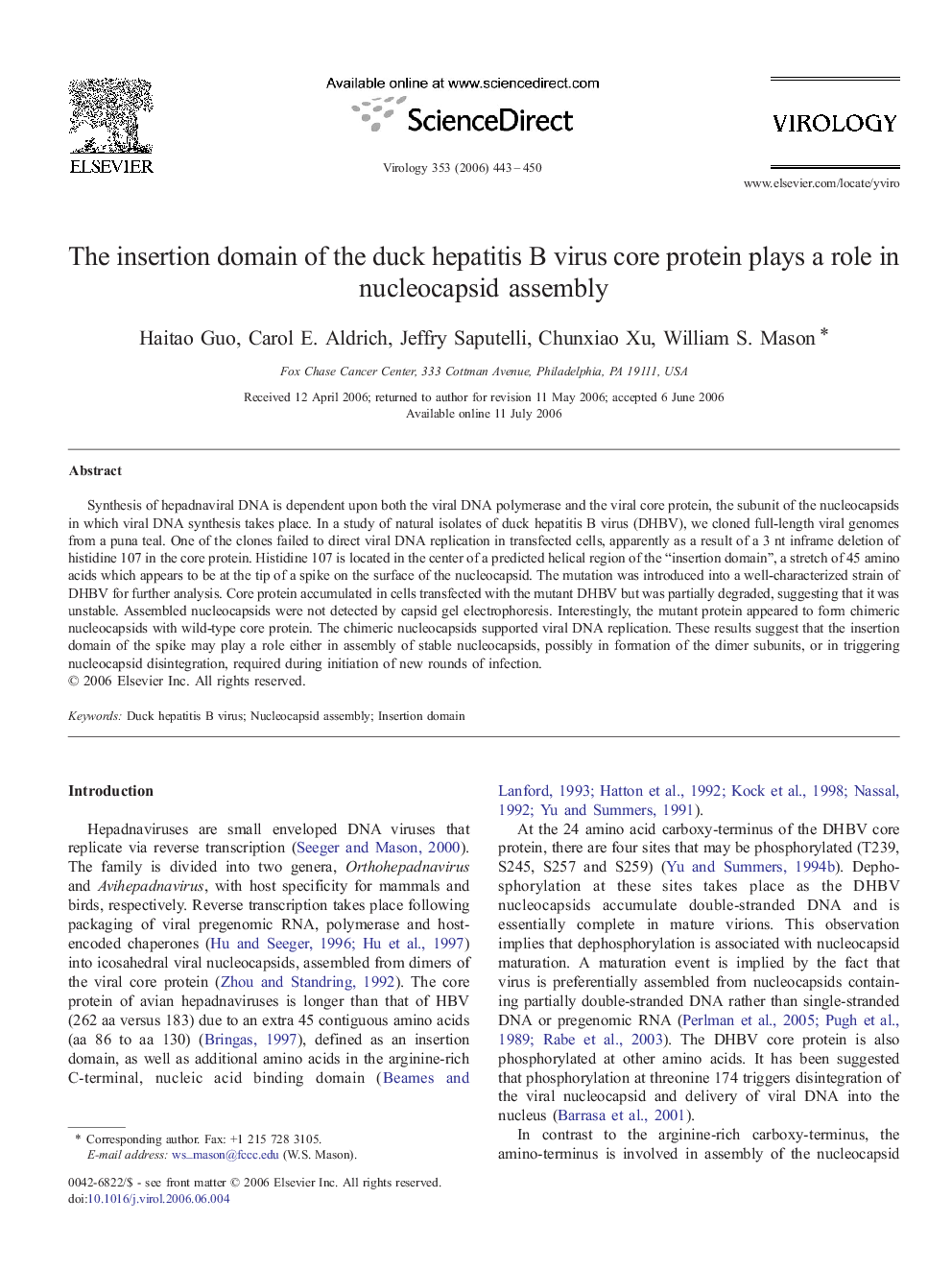| Article ID | Journal | Published Year | Pages | File Type |
|---|---|---|---|---|
| 3427542 | Virology | 2006 | 8 Pages |
Synthesis of hepadnaviral DNA is dependent upon both the viral DNA polymerase and the viral core protein, the subunit of the nucleocapsids in which viral DNA synthesis takes place. In a study of natural isolates of duck hepatitis B virus (DHBV), we cloned full-length viral genomes from a puna teal. One of the clones failed to direct viral DNA replication in transfected cells, apparently as a result of a 3 nt inframe deletion of histidine 107 in the core protein. Histidine 107 is located in the center of a predicted helical region of the “insertion domain”, a stretch of 45 amino acids which appears to be at the tip of a spike on the surface of the nucleocapsid. The mutation was introduced into a well-characterized strain of DHBV for further analysis. Core protein accumulated in cells transfected with the mutant DHBV but was partially degraded, suggesting that it was unstable. Assembled nucleocapsids were not detected by capsid gel electrophoresis. Interestingly, the mutant protein appeared to form chimeric nucleocapsids with wild-type core protein. The chimeric nucleocapsids supported viral DNA replication. These results suggest that the insertion domain of the spike may play a role either in assembly of stable nucleocapsids, possibly in formation of the dimer subunits, or in triggering nucleocapsid disintegration, required during initiation of new rounds of infection.
